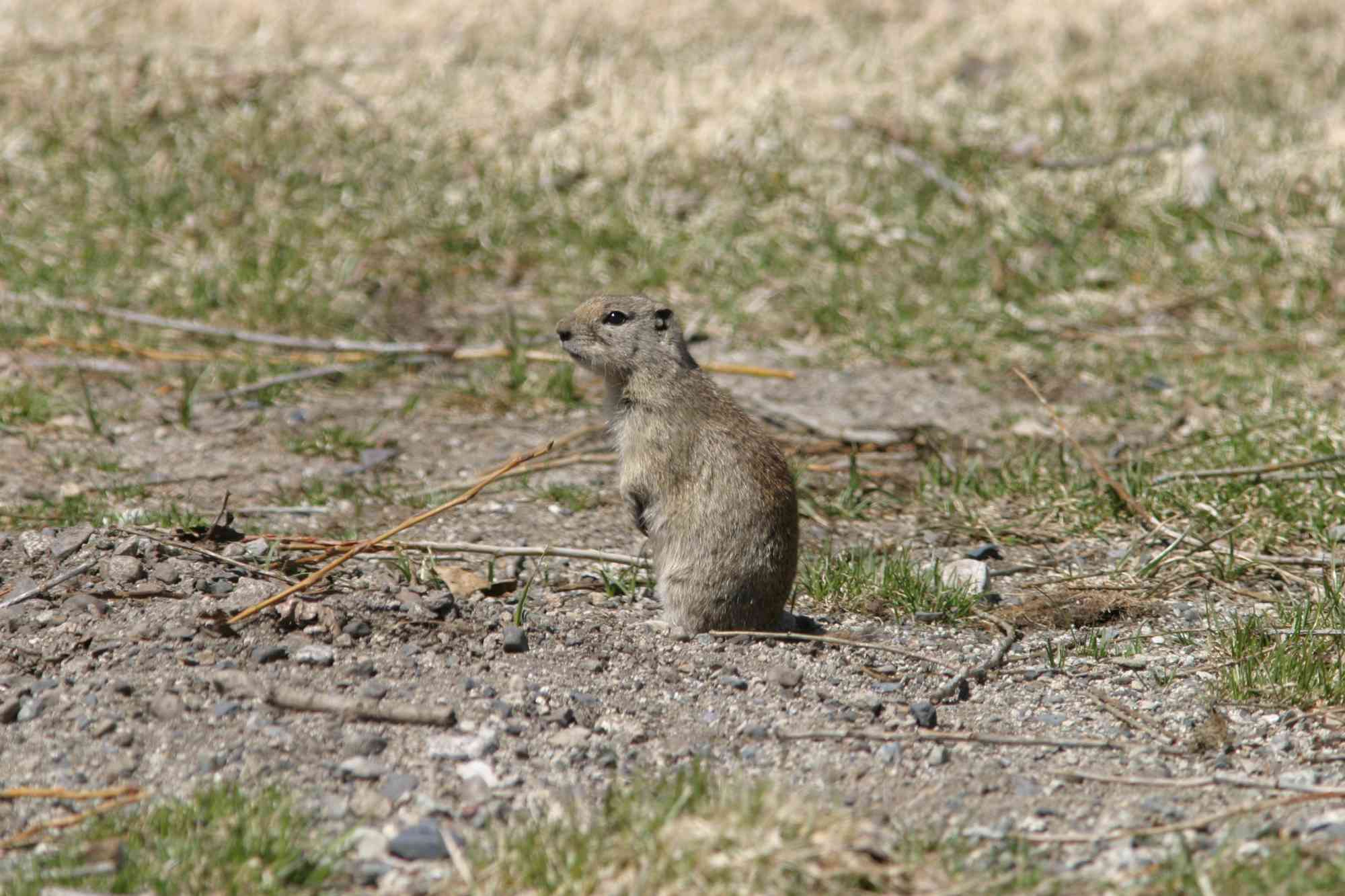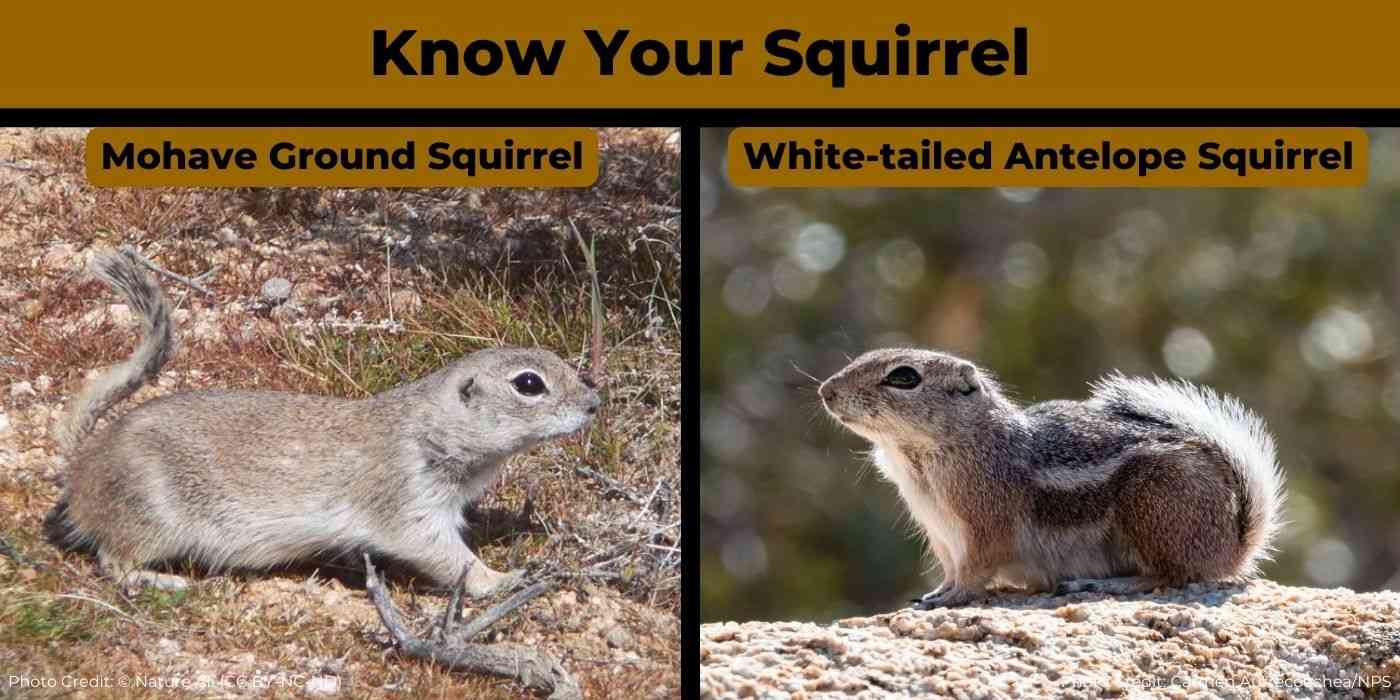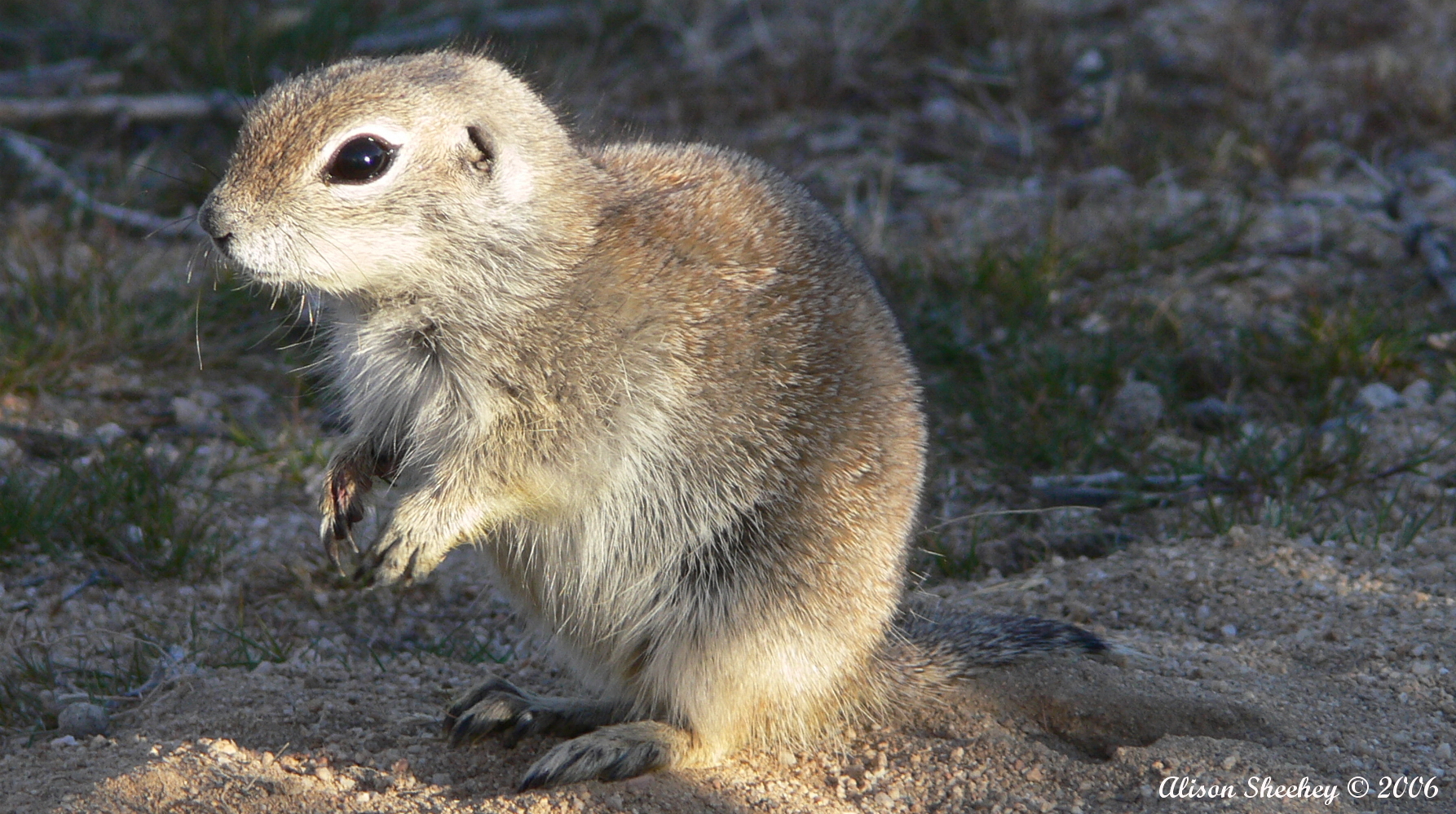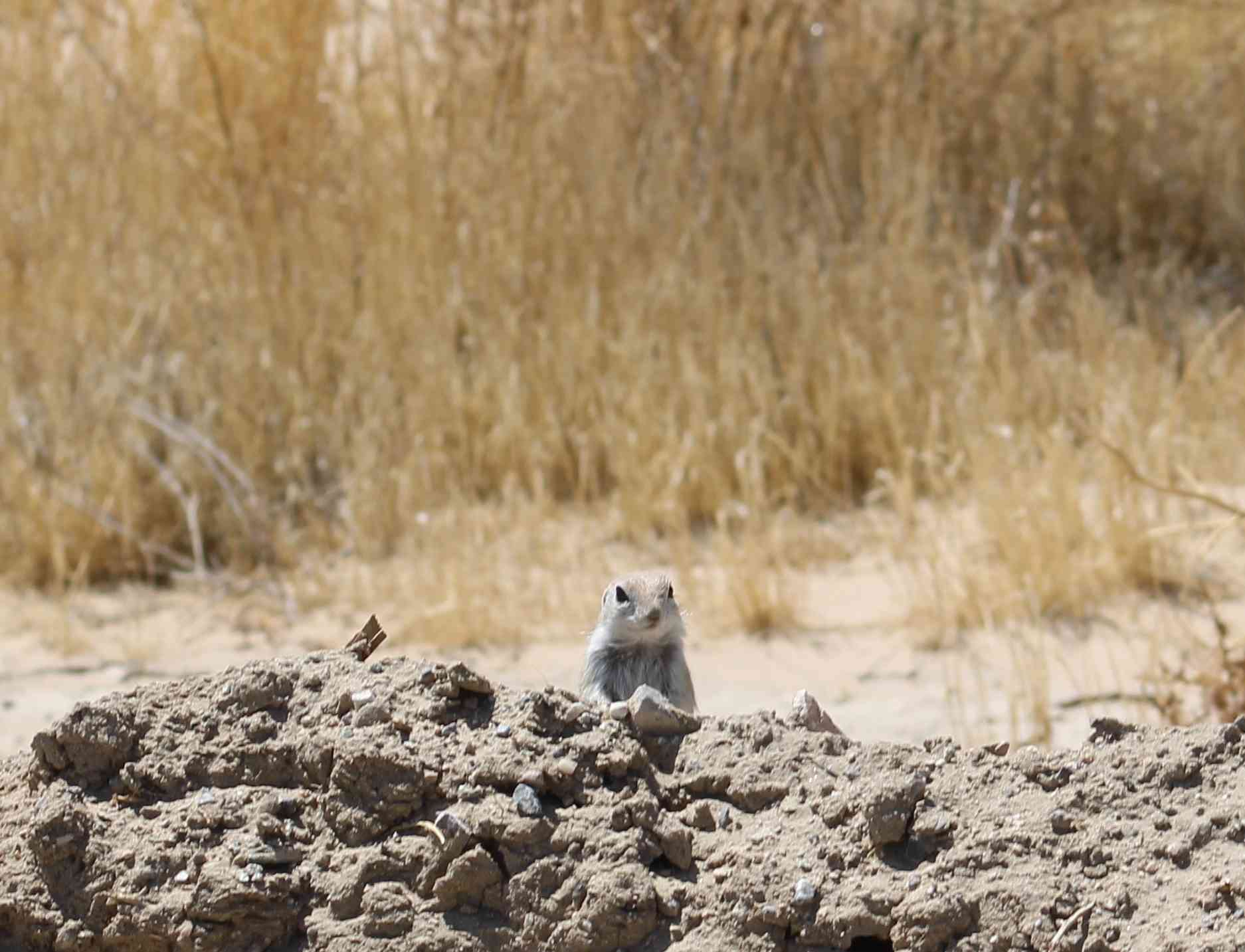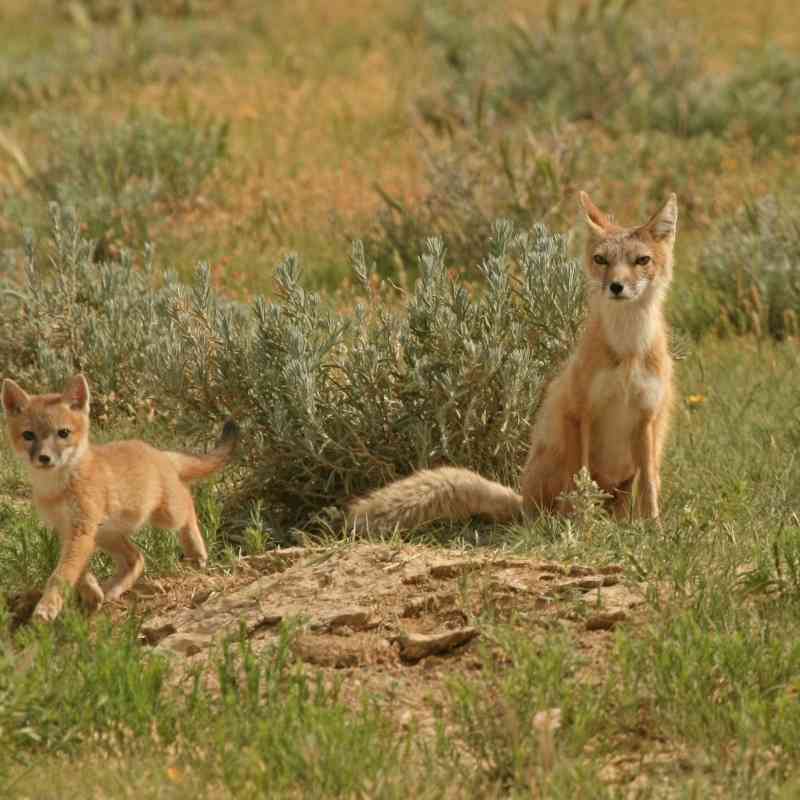Under the hot sun and sparse vegetation of the Mojave Desert lives a roughly 9-inch-long olive brown rodent known as the Mohave ground squirrel. While partaking in a live-trapping survey in 1980 with the Bureau of Land Management, we captured 391 of these squirrels, the largest number caught in any survey. We were very surprised to have caught so many because previous researchers described the Mohave ground squirrel as difficult to trap, with populations occurring in low numbers.
Mohave ground squirrels were listed as a threatened species by the California Fish and Game Commission in 1971. Since the early 2000s, Defenders of Wildlife has worked with other conservation groups to petition for this ground squirrel to be listed under the federal Endangered Species Act, with the most recent petition submitted in December 2023.
To learn more about the Mohave ground squirrel, let’s dig into these seven facts!
1. The Mohave ground squirrel is endemic to the western Mojave Desert and found nowhere else on Earth.
It has the smallest range of any ground squirrel in North America. The Mojave Desert is the ideal spot for these squirrels because of the combination of winter precipitation, abundant wildflowers and shrubs, and relatively moderate temperatures during the summer.
2. Mohave ground squirrels are primarily herbivores.
During the early spring their diet consists of leaves and flowers of both annual and perennial plants including sunflowers, lupine, legumes, winterfat, spiny hopsage, boxthorn and saltbush. In the late spring, Mohave ground squirrels also eat seeds and will occasionally add grasshoppers, ants and beetles to their diet.
3. This ground squirrel aids in plant and soil health.
Mohave ground squirrels disperse seeds of native plants including the Joshua tree, which has large seeds the squirrels will often store as food in their burrows. These squirrels also aerate soil by digging burrows.
4. Mohave ground squirrels live underground for most of the year.
This ground squirrel is active above ground during the spring and early summer. During the remainder of the summer they aestivate, meaning they are dormant, in burrows constructed near the base of large shrubs. They remain underground in their burrows throughout fall and winter.
5. These desert-dwelling squirrels do not drink water.
Instead, Mohave ground squirrels get their water intake from the succulent leaves and seeds they consume.
6. Mohave ground squirrels make a high-pitched whistle when alarmed.
Credit: California Department of Fish and Wildlife
7. The species no longer exists in over 40% of its historical range.
Within the last 20 years, there has been a significant increase in off-road vehicle recreation, urban expansion, irrigated agriculture and military base expansion.
A 26,000-acre State Off-highway Vehicle Recreation Area was established about a decade ago in the western portion of the Mohave ground squirrel’s range. The issues here include vehicle noise disrupting their ability to communicate with other squirrels. Additionally, vehicle collisions with these animals are usually fatal and their burrows may collapse when vehicles drive over them.
Creating similar issues for this state-threatened ground squirrel on the northeastern portion of their range is the U.S. Army’s National Training Center at Fort Irwin. Congress authorized expansion of the center — which overlaps with one of several known key Mohave ground squirrel population areas — so the Army could increase mechanized warfare training. In addition to noise disruption, mechanized training with heavy combat vehicles will result in habitat loss and fragmentation. However, the Army is considering live capturing some individuals and using them in a captive breeding program. This program could produce squirrels for relocation into suitable habitats.
Climate change is also creating longer periods of drought in the Mojave Desert and higher temperatures. Mohave ground squirrels are expected to lose up to 57% of their habitat by 2030 and up to 84% by 2080 due to climate change impacts.
Bonus: It’s not too late to save the Mohave ground squirrel and you can help!
After U.S. Fish and Wildlife Service evaluates our petition, please join Defenders and other conservation groups in urging FWS to list the Mohave ground squirrel as a threatened species under the ESA and designate critical habitat.Californians can additionally help this endemic species by staying informed about proposed land uses that would destroy or fragment remaining habitat and submit opposition letters to local, state and federal agencies having permitting authority. Finally, consider supporting organizations like Defenders that are working to promote conservation and protect the western Mojave Desert!
Author

Jeff Aardahl
comments
Wildlife & Wild Places

